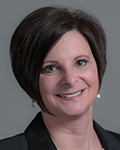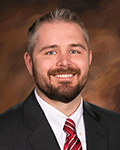By Tom Strangstalien
Insurance Advisor with WisMed Assure
September is Life Insurance Awareness Month. All month long, as I sat sipping my morning coffee, I reflected on how many times I’ve experienced the life changing impact of life insurance.
Even though I’ve been a life insurance agent for more than two decades, there are times when even I take for granted this life changing tool within our financial tool box. There are dozens of stories I can tell about how life insurance has truly been a difference maker in the lives of so many. Four of these stories stand out in particular because they had a direct personal impact on me.
Rene’s Home
Rene designed a plan, utilizing universal life insurance to potentially pay off the mortgage on her home early. The policy insured the lives of her and her husband jointly, and we funded the policy in such a way to grow the cash value quickly, yet be friendly to the family budget.
One day, John mentioned to Rene that he had a lump on the back of his tongue which was bothering him. Being a nurse, Rene advised John, that he probably should get it checked out by their Doctor. John battled cancer for the next four months. The family took care of him at home, until the day came when John passed away in his sleep.
I received a call from Rene months later. Choking back tears, she told me because of the plan that was intended to pay the mortgage off early, the life insurance allowed her to remain in the home with her two daughters. She went on to tell me that she was going back to college to advance her status to a Registered Nurse. After much expression of gratitude and profuse thanks, she ended by telling me I helped the family change their life. Speechless at first, I finally said, “Yes, life insurance is a game changer.”
Rene is debt free, cherishing her career as a registered nurse, while her two daughters attend college in Eau Claire.
Don’s Hockey Legacy
My son is a hockey player. Our small-town hockey rink was actually a make shift park shelter. I cherish the times that we set up the chiller to make the ice for the season, construct the walls, bring in the bleachers, and keep the rink maintained throughout the winter season. Our rink was viewed as a joke, and with a little bit of disdain by our fellow competitors throughout the state.
However, we were really good. In fact, we took home many tournament trophies, state youth championship titles, and as a high school advanced to the state tournament on multiple occasions. How amazing would it be if we had a real rink? In discussing ideas with the parent committee on how to pursue such an aggressive endeavor, I suggested we approach community benefactors.
I proposed an idea to Don, a very successful businessman in the community, that we fund a $5 million life insurance policy to someday create a community hockey arena and event center, bearing his family’s name. After deliberation with his tax accountant, he learned the charitable pursuit would provide a large benefit to him “tax wise”. His family stands proud of their patriarch, as they regularly witness the use of the family named facility. Don made a difference, and his legacy lives on.
Life Can Go On
Wayne would do anything for me, and pretty much for everyone.
He helped me put up my tree stands for deer hunting every season. He taught me the ropes to hunt for ginseng in the fall and morel mushrooms in the spring. When the Brewers would play during the summer, I would frequently see Wayne and Carla’s truck pulling into our driveway, with their daughter Carlie in tow, to have a cold one, watch the Brewers, and do our best to discover the meaning of life.
As with all of my friends, I encouraged Wayne to purchase a term life insurance policy. Their budget was tight, but we were able to formulate a significant amount of coverage with an affordable price.
On a really soggy rainy day in the spring of 2016, Wayne, Carla, and Carlie ventured out to Carla’s mother’s land, located in Iowa. They would frequently take these trips, and while Carla visited with her mother, Wayne would maintain the family farm.
Shortly after crossing the bridge into Minnesota, and initiating the trip south to the Iowa border, Carla saw a tree give way on the bluff above. There was no time to react. The tree landed on the roof of the truck, killing Wayne instantly, breaking Carla’s neck, and leaving Carlie with head trauma and face lacerations.
Carla was now a single parent, in a neck brace for months. Carlie recovered, cherishing the moments with her father and hero. I stood silent at the funeral, as the military salute and folding of the flag took place. Doing their best to emulate Wayne, the family stood tall, confident, and proud. Life would go on, and they would be “ok”.
My Friend Randy
Randy was my best friend. We went to high school together, were college roommates for four years, and his brother married my sister. I recruited Randy to join our team in the “insurance business”. After some hesitation, Randy joined the team, and we spent many nights together learning the business. His on the job training involved writing a policy on himself (encouraged by me).
I’ll never forget the call I received from my mother one beautiful April spring morning. She uttered, “Are you sitting down?” As I sipped my morning coffee at my kitchen table, I replied an affirmative yes. “I have some news. Your friend Randy woke up yesterday, and was going to read the morning paper, but he couldn’t. He was diagnosed with an inoperable brain tumor, and has about 6 months to live.” The words shook me to my core.
I took Randy shopping for his groceries one day. That was the last time I saw him. Six months from the date of the initial diagnosis, Randy was gone. He left behind two children, ages 5 and 7, and his wife Michelle who was a nurse. Michelle cried when she got the check for the life insurance. She was able to purchase a home for the family, continue her career in the medical field, and eventually put both boys through college.
Are You Aware?
Heaven forbid anything happens to you or your loved ones. But, wishing is not a plan. If you would like to explore and discover the very best possible options to fit your needs, I am always available. Please contact me with any questions or concerns you may have.
Tom Strangstalien
Insurance Advisor
WisMed Assure
Direct: 608-442-3730
Cell: 608-304-1579
tom.strangstalien@wismedassure.org


